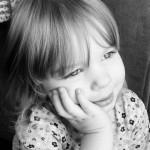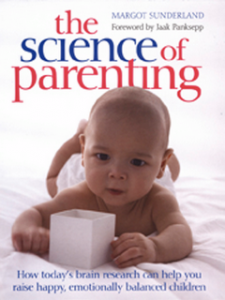By Denise Durkin, M.A., early childhood mental health consultant and self-regulation specialist, www.ourholistickids.com
We know that when we engage children personally over time through our warm, sincere, kind and playful interest in them and their activities, we deepen our positive attachment through this attunement to and presence with them, and they are more likely to comply with our directives even if we call to them from across the room to pick up their toys. But why is this so?
To deepen our insights into why children behave the way they do and increase our psychological literacy overall (it helps with all relationships), it’s worth looking at the underlying dynamics of attachment as they relate to the beginning stages of the most important concept a child will ever develop in her lifetime—her identity schema.
In psychology and other fields, the term schema is used to describe a mental concept or template used to organize knowledge. Schemas are dynamic, meaning they develop actively and are self-revising. We all have unlimited schemas that we have developed over time, such as our schema for a house, for budgeting, for an ideal companion, etc.
In this discussion, a child’s identity schema refers to her self-concept. A child’s earliest schemas are tightly-woven formative structures for her sense of self and the world at large—for her idea of who she is, how safe the world is, and how the world sees her. As I see it, this tight web of information and experiences the child begins to internalize in early life is the core origin of her identity schema.
I am talking about a child’s first impression about herself, about who she believes herself to be. This belief is directly related to her capacities for self-regulation as she grows up and into adulthood. For example, her ability to tolerate strong emotion, focus on and complete tasks, communicate well and engage rewardingly with others hinge on how safe and balanced she feels, which tie back to her self-concept.
The first kind of identity schema is made up of emotional imprints, not words, since emotions are preverbal. The thinking here is that we can start to trace the beginning of a child’s identity schema at eight months in utero, when his amygdala begins sensing his mother’s hormone levels. If the mother feels safe and contented, the baby likely will, too. If his mother is in danger or under stress and her cortisol levels are high for extended periods, the baby may experience continued stress, translating to an emotional imprint of being unsafe. Hence, the infant’s first concept of himself may be as feeling unsafe, ergo, “I am unsafe.” This is an awareness that the child won’t be able to recall consciously in later years, yet the emotions are real, and they leave impressions that affect the development of his formative sense of self.
In the early months and years of a young child, negative experiences such as poverty, lack of physical or emotional nourishment, and other hardships may validate and reinforce his negative identity schema. This may translate to impressions such as, “People don’t care what I have to say, what I like, what I want. I can’t have what I need. What’s wrong with me? I’m not good. I’m not enough.” He may feel both emotionally unsafe and internally imbalanced.
In contrast, when an infant’s needs are taken care of in loving, compassionate and timely ways, he begins to internalize a positive identity schema. The positive emotions he feels by way of his caregivers knowing and meeting his needs relay these truths to him: “My needs are met. I am taken care of. I am valued. The world is safe. I am lovable. I am good.” The implications for a child’s personality, expectations, happiness, social successes and more, based on this initial schema development, are staggering.
As he begins to understand words, he also begins to internalize the second kind of identity schema—the cognitive schema for who he is. As he toddles about, the child learns more about himself through labels and the meanings that other people intentionally teach him, such as, “I am a boy. I am a brother. I am a good buttoner. I like painting.” Let’s remember that he acquires both emotional and cognitive schemas by either assuming them or by being directly taught them. Therefore, it is our very important job to be mindful of what identity schemas we teach and children internalize.
The choice of attitudes, words, and statements his parents, caregivers, and teachers use with him directly or indirectly affect the messages he internalizes. In a best case scenario, he feels, “I am enough. Life loves me. I am free to be who I am, as I am. I am absolutely cherished.” Once a child feels both safe and balanced, he is capable of self-regulation. And when he is feeling both safe and balanced in his body and in the world—feeling seen, understood, respected, and taken care of—he is much, much more likely to take directives from his caregivers and to decrease behavioral challenges.
But nobody’s perfect, and we all do what we can based on the skills and awareness we have at any given time. Increasing our psychological literacy can help us make the most insightful and caring choices as we consider our children’s innermost needs and how to meet them.
Since our goal is to raise our children to be in “right relationship” with themselves as the prerequisite to being in right relationship with others and the world, focusing on their earliest schema development, particularly their identity schema, puts them on the right track for all kinds of successes over the course of their childhood and adult life.
 Let’s start out 2014 by talking about The Science of Parenting by Margot Sunderland. Some of the interesting sections from the first half of the book are:
Let’s start out 2014 by talking about The Science of Parenting by Margot Sunderland. Some of the interesting sections from the first half of the book are:





 Dear Readers,
Dear Readers, One year, two years, five years, ten years – just what is the ideal spacing between siblings?
One year, two years, five years, ten years – just what is the ideal spacing between siblings? The typical scenario of a young married couple adopting an infant from birth has changed dramatically and has been redefined. Historically, a traditional adoption was defined as a healthy infant placed with an infertile, middle-class white couple.
The typical scenario of a young married couple adopting an infant from birth has changed dramatically and has been redefined. Historically, a traditional adoption was defined as a healthy infant placed with an infertile, middle-class white couple.